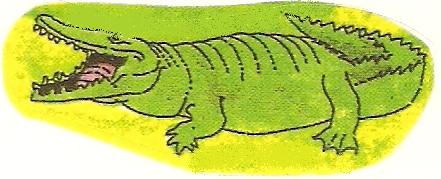Model is a simpler way to view cloud-rain interactions, say Boulder and Israel researchers
Hungry rains devour clouds in a pattern that’s similar to the way foxes prey on rabbits, according to a new study by a Boulder researcher.
When rabbit populations flourish, the number of foxes also begins to increase. The boom in foxes eventually causes a decline in the number of rabbits, which in turn, results in a decrease in the fox population. This oscillation in predator-prey numbers — with the predator’s peak lagging slightly behind the prey’s peak — is described by a mathematical equation known as the Lotka-Volterra model.
In study published last month in the Proceedings of the National Academy of Sciences, Graham Feingold, a researcher at the National Oceanic and Atmospheric Administration in Boulder, and Ilan Koren, of the Wiezmann Institute of Science in Israel, showed that the relationship between cloud formation and rain can also be described using the simple predator-prey population model.
“The rabbit population — or in our case, the cloud population — starts to build up,” Feingold said. “At that point the foxes — or the rain — starts to eat the cloud. The cloud will start to dissipate. As soon as the thickness of the cloud has gone down, there’s less food for the rain.”
Cloud formation is a complicated process that scientists have worked for decades to describe. The result is a detailed mathematical model that depends on huge computers to run complex simulations. Applying the predator-prey model allows atmospheric scientists to describe patterns of cloud formation in a much simpler way.
“We’re not saying, ‘Put aside your giant computers; we’re going to use a toy model now,'” Feingold said. “But we can see some underlying simplicity in this very complex system. … We’re trying to explore the possibility that we don’t’ always have to use these huge time-consuming computer simulations.”
For example, a predator-prey type model might allow a cloud model to be more easily incorporated into a larger climate model, which may already be burdened with dense complexities.
Feingold and Koren were struck with the idea of applying the predator-prey model to clouds when they were researching stratocumulus clouds, which form in sheets that are honeycombed with openings, for a study that was published last year in the journal Nature. The pair realized that the rain showers they were observing under the stratocumulus clouds came in predictable oscillations.
“It was sort of strange, but we didn’t make too much of it,” Feingold said. “At that point, we wondered if the cloud was also going through a similar oscillation.”
It was. The cloud was dissipating 10 to 15 minutes behind the rainfall. When the rain stopped, the cloud began to build up again, ultimately causing more rain.
The model applied by Koren and Feingold also takes into account aerosols — suspended particles in the atmosphere — which are critical for clouds to begin forming. Without aerosols, cloud droplets have nothing to cling to. The number of aerosols can also affect the amount of rain that can be produced from a cloud.
The greater the number of aerosols, the more spread out the cloud droplets, which makes it more difficult for the cloud droplets to collide with each other and, eventually, form raindrops.
The inclusion of aerosols in the formula — which essentially represent the food for the rabbit-like clouds — is important because it lets researchers explore how human-produced aerosols may be altering precipitation patterns.
The simplified model may “open new windows into the complex relationships between clouds, rain and aerosols, giving us a more useful view of the big picture and helping us to understand how shifting aerosol levels can lead to different climate patterns,” Koren said in a publication of the Weizmann Institute.
Contact Camera Staff Writer Laura Snider at 303-473-1327 or sniderl@dailycamera.com.
http://www.dailycamera.com/science-environment/ci_18648011?IADID=Search-www.dailycamera.com-www.dailycamera.com





